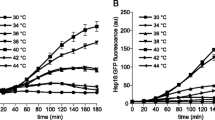Abstract.
Eukaryotic cells have a highly conserved response to an increase in temperature, termed the heat shock response. Recent research has revealed multiple roles for various sphingolipids in the heat shock responses of both yeast and mammalian cells. Heat stressed or shocked yeast and mammalian cells have an acute activation of serine palmitoyltransferase, resulting in the de novo biosynthesis of sphingolipids. Also, both mammalian and yeast cells were shown to increase ceramide levels upon heat stress or shock. In yeast cells, several functions have emerged for the de novo produced sphingoid bases in terms of the heat stress response. These functions include a role in accumulation of trehalose, a role in the heat-induced transient G0/G1 cell cycle arrest and phytosphingosine activation of a ubiquitin protein degradation pathway. However, in mammalian systems, ceramides have been demonstrated as bioactive lipids. Ceramides produced in response to heat shock were demonstrated to induce the production of c-jun, leading to apoptosis, and to be upstream of dephosphorylation of serine-rich proteins. Increasingly, sphingolipids are emerging as bioactive signaling molecules involved in numerous aspects of the eukaryotic heat shock response.
Similar content being viewed by others
Author information
Authors and Affiliations
Additional information
Received 29 August 2002; accepted 25 September 2002
Rights and permissions
About this article
Cite this article
Jenkins, G. The emerging role for sphingolipids in the eukaryotic heat shock response. CMLS, Cell. Mol. Life Sci. 60, 701–710 (2003). https://doi.org/10.1007/s00018-003-2239-0
Issue Date:
DOI: https://doi.org/10.1007/s00018-003-2239-0




